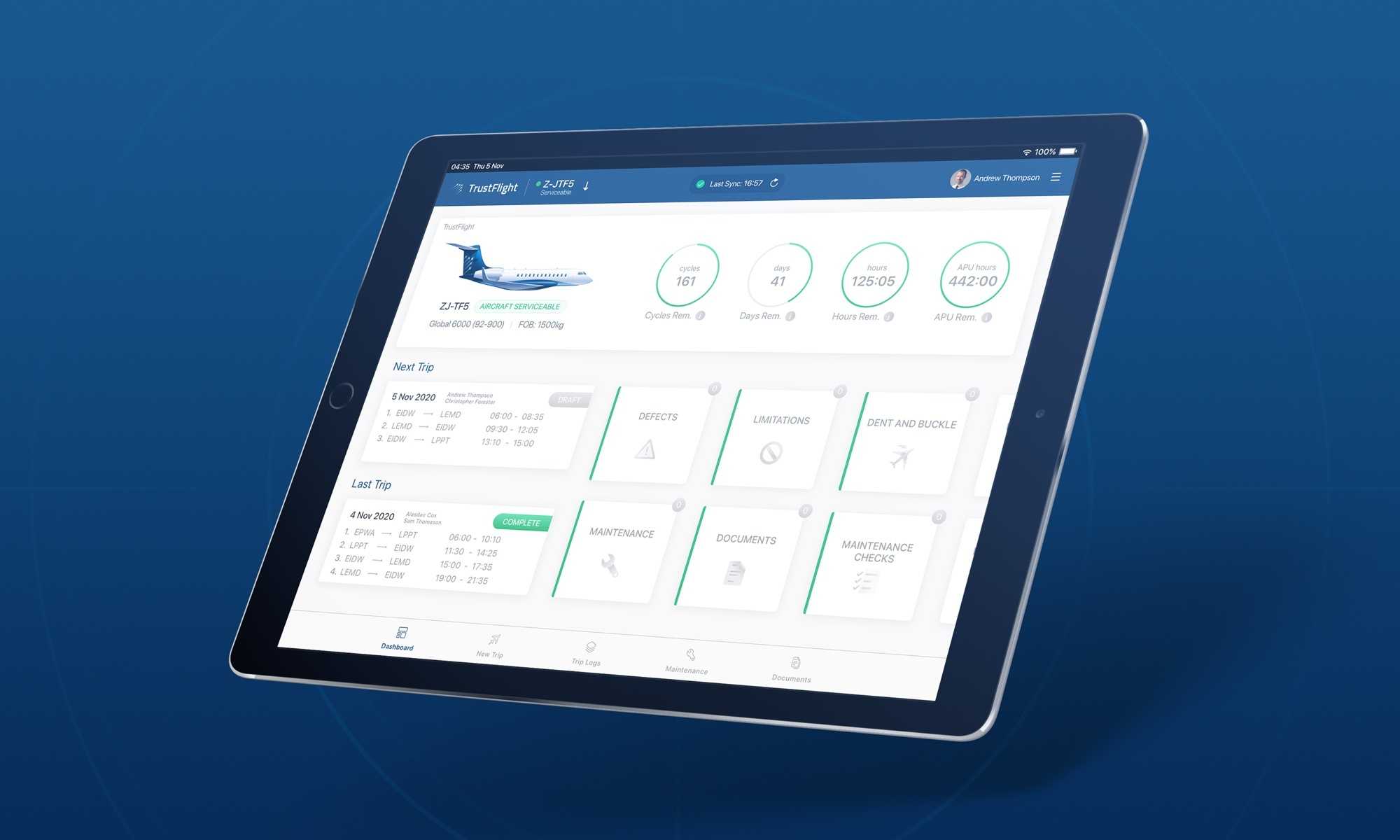Electronic Tech Logs & how they can improve your operation
If you’ve ever glanced into the cockpit before or after a flight, there’s a good chance you’ll have seen one of the flight crew filling out a thick binder of paper forms. These forms make up what’s often referred to as the Aircraft Technical Log, Journey Log or, just the Aircraft Logbook. The digitization of this paper-based process provides many benefits to operators including cost reduction, delay reduction, and the opportunity for greater analytics surrounding aircraft operational performance and reliability. This article will explore how Electronic Tech Logs can achieve this and what steps operators should take to maximize the benefits.
What is an Aircraft Technical Log?
The Aircraft Technical Log (‘tech log’) is a process used to record and document the airworthiness status of the aircraft. Principally, the tech log will consist of a form completed on each flight or trip and supporting documentation on maintenance procedures and any deferred defect or damage on the aircraft.
The form is used to record aircraft utilization information such as flight times and cycles, alongside information on when the next scheduled maintenance is due, details of any open or deferred defects, and details of the last maintenance release.
The tech log is regulated for European operators under EASA Part-M/Part-CAMO regulations, but in other jurisdictions operators will often carry out a variation of a similar process. In some cases, these processes may be referred to as the Journey Log or Aircraft Logbook.
The forms filled out in the tech log are usually completed on carbonized paper to retain a copy on the aircraft and distribute the others to ground handling agents and the operator’s maintenance management team. As a paper process, this has its challenges, primarily: the risk of induced errors; the time required to process the paperwork; and the delays in the availability of information.
Errors in the paperwork are a common occurrence arising in 30-50% of all tech log entries, and these can cause significant risks to operators.
Firstly, as the hours and cycles recorded are used to determine when to carry out maintenance, a deviation either way from the correct value can either lead to a shortened, and therefore more expensive, maintenance interval, or the risk of missing a maintenance task and generating safety implications.
Additionally, on many aircraft under hourly maintenance programs, the cost of misrepresented aircraft hours can add up quickly.
Availability of data also causes challenges for operators. With a paper process, it can take days for details of a defect or a deferred item on an aircraft to be processed, and this can lead to reduced timescales to source parts and the risk of an aircraft left AOG. Recent changes introduced due to Covid-19 such as remote working have also created challenges in managing a physical paper process which requires the handling of original copies of paperwork and manual entry into maintenance systems.
Electronic Tech Log
An Electronic Tech Log, as the name suggests, is an electronic equivalent of the paper tech log process. Electronic Tech Logs come in many different guises from basic forms through to more sophisticated digital workflow applications such as TrustFlight’s Tech Log - these allow operators to not only replace the paper system but also leverage all of the benefits from a digital platform.
TrustFlight’s Tech Log is the leading System for business aircraft operators and provides a simple and intuitive app that can be installed on an operator’s existing iPad EFB device. This iPad app provides flight crew and engineers with a work-flow based approach to completing the tech log, with pre-filled data where available, and validation on any entries by the user. This is a different approach to many other systems which take the existing tech log form and just create a digital copy of it on a tablet.
In addition to the iPad app, TrustFlight’s system includes a complete management dashboard which allows the operator to view real-time information on their fleet status, open defects as well as managing integrations with popular systems in use throughout the industry such as CAMP.
Benefits
The primary reason operators adopt an Electronic Tech Log is to save cost. This is initially gained through time savings from pilots creating the logs, and technical records clerks who must check and enter the logs into various maintenance tracking and scheduling systems.
With the electronic system, initial entry is quick and data is automatically imported into the various third-party systems. In total, this can save approximately 40 hours of work per aircraft per month.
This 40 hour saving greatly reduces the cost of processing tech logs, however, the hidden costs of inaccuracies can be much larger. As an example, a large business aircraft operator found they were overreporting utilization on one of their aircraft by over 20 hours a year, amounting to an extra $20k spent in maintenance program payments unnecessarily.
When it comes to managing defects on an aircraft, speed and access to up-to-date information are key. This is an area where the Electronic Tech Log shines as defects can easily be entered in the system at which point all required personnel are notified in real-time, and work can be started to resolve the items - even if the aircraft is in the air.
Additionally, being able to rapidly defer items on an aircraft in a quick and compliant manner can help significantly with reducing delays. TrustFlight’s Tech Log includes a complete digital MEL, which highlights relevant items and guides the user through all the requirements for deferral - an area operators commonly struggle to comply with.
Finally, one further benefit of an Electronic Tech Log is with the right system, data can be recorded to a much higher equivalent and with better compliance compared to a paper system. This allows more detailed analytics to be conducted on the aircraft to identify trends on defect reports or items such as delay factors.
Also, when it comes to selling an aircraft, being able to instantly provide a complete history of logs will prevent any risk of delays in transactions or difficulties when it comes to financing the asset.
How to get started
Moving to an Electronic Tech Log can be easier than you may think. TrustFlight’s system is unique in that it can export the identical paperwork that an operator may already have, thereby reducing the amount of training and process changes required. Additionally it is recognised by EASA and meets all major regulatory requirements worldwide allowing for easy acceptance by the relevant authority.
The system integrates with many of the common maintenance tracking and scheduling systems in use today, so with a short period of running the Electronic Tech Log alongside the existing paper process, an operator can switch over to the TrustFlight system and see benefits in a matter of weeks.
TrustFlight currently has multiple major business aircraft charter operators using the system within Europe, North America and the Middle East, including Flexjet & TAG Aviation.
Please contact sales@trustflight.com to learn how we can help your operation
Let's get started
Talk to our sales team to find out how you can transform your operation with our products and services.


